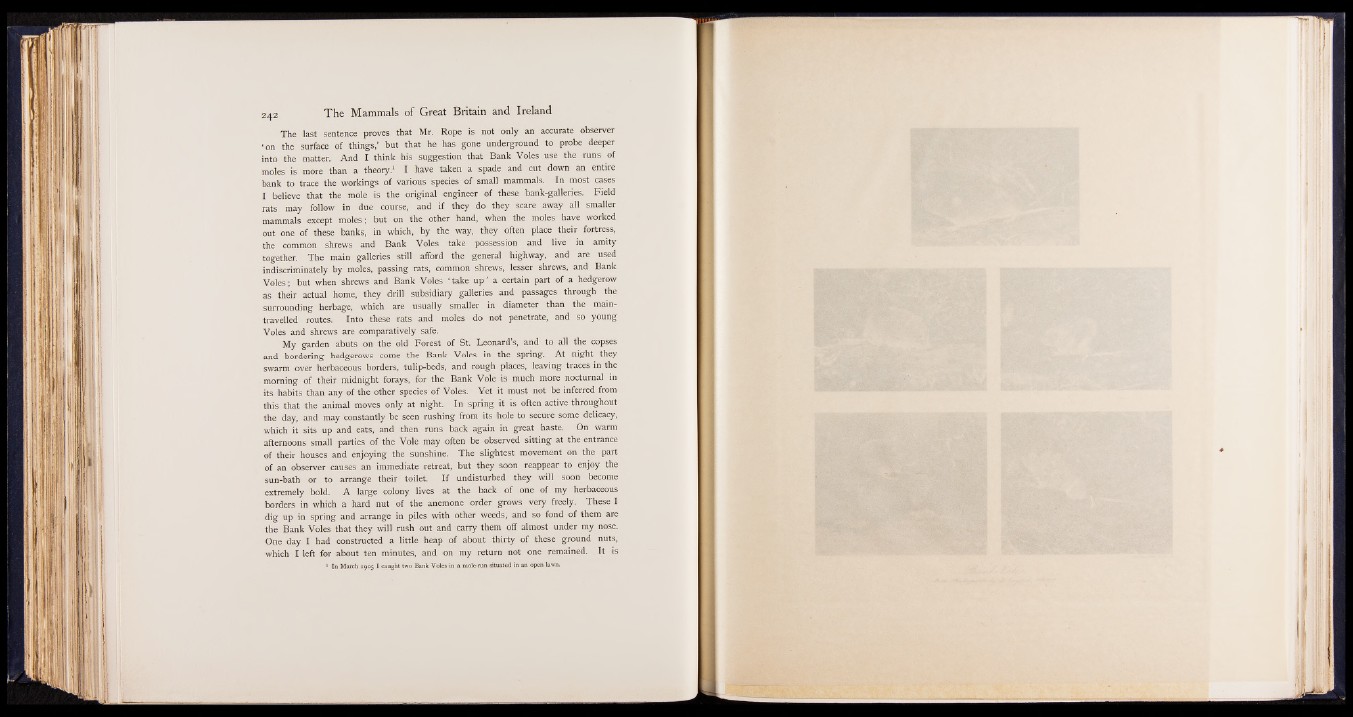
The last sentence proves that Mr. Rope is not only an accurate observer
‘ on the surface of things,’ but that he has gone underground to probe deeper
into the matter. And I think his suggestion that Bank Voles use the runs of
moles is more than a theory.1 I have taken a spade and cut down an entire
bank to trace the workings of various species of small mammals. In most cases
I believe that the mole is the original engineer of these bank-galleries. Field
rats may follow in due course, and if they do they scare away all smaller
mammals except moles; but on the other hand, when the moles have worked
out one of these banks, in which, by the way, they often place their fortress,
the common shrews and Bank Voles take possession and live in amity
together. The main galleries still afford the general highway, and are used
indiscriminately by moles, passing rats, common shrews, lesser shrews, and Bank
Voles; but when shrews and Bank Voles ‘ take u p’ a certain part of a hedgerow
as their actual home, they drill subsidiary galleries and passages through the
surrounding herbage, which are usually smaller in diameter than the main-
travelled routes. Into these rats and moles do not penetrate, and so young
Voles and shrews are comparatively safe.
My garden abuts on the old Forest of St. Leonard’s, and to all the copses
and bordering hedgerows come the Bank Voles in the spring. At night they
swarm over herbaceous borders, tulip-beds, and rough places, leaving traces in the
morning of their midnight forays, for the Bank Vole is much more nocturnal in
its habits than any of the other species of Voles. Yet it must not be inferred from
this that the animal moves only at night. In spring it is often active throughout
the day, and may constantly be seen rushing from its hole to secure some delicacy,
which it sits up and eats, and then runs back again in great haste. On warm
afternoons small parties of the Vole may often be observed sitting at the entrance
of their houses and enjoying the sunshine. The slightest movement on the part
of an observer causes an immediate retreat, but they soon reappear to enjoy the
sun-bath or to arrange their toilet. I f undisturbed they will soon become
extremely bold. A large colony lives at the back of one of my herbaceous
borders in which a hard nut of the anemone order grows very freely. These I
dig up in spring and arrange in piles with other weeds, and so fond of them are
the Bank Voles that they will rush out and carry them off almost under my nose.
One day I had constructed a little heap of about thirty of these ground nuts,
which I left for about ten minutes, and on my return not one remained. It is
1 In March 1905 I caught two Bank Voles in a mole-run situated in an open lawn.